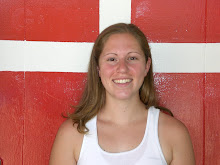In Canada at CBC News they have been doing many studies in the United States as well as Canada about the use of aerobic exercise and how it helps stimulate brain function. In Canada, at City Park Collegiate School in the
Saskatoon Public School they have been using this theory to help improve their students ability to concentrate and comprehend the information that they were learning in their class. This school is located in the lower central part of Canada above North Dakota.
The teacher of the class, Allison Cameron, has been working with her students very diligently in order to help them in their ability to perform better in the class room. This peace is highly interesting to me because I see how well it has improved the students ability to perform in the classroom, as well in their lives. It reinforces my belief that exercise is vital to students.
I do not think that the physical education teacher was involved in this experiment because it was being run primarily by the teacher of the class. It is now shown whether or not the physical education teacher helped with the program or not, but they showed a clip of the students participating in their p.e. class while they were at the school and many of the students were not actively participating, but were instead standing around. Even some of the students were just standing at the side of the gym watching everyone play while they lean against the gym wall. As you can see in my following blog posts from when I am teaching, I try to have all of the students that are in my class continuously moving. (
Lab D)
The following
video is about a group of students with discipline and learning problems at a school, City Park Collegiate, that is designed for students that are no longer accepted at other public schools. From this program it has shown that the students had
improved their push-ups by 277%, their sit-ups 224%, their sit reach by 21%, and decreased their BMI by 5%. Besides improving their physical strength and fitness, they also maximized their academic success. Their fluency increased by 121.4% and their comprehension by 230%. In their studies in reading 27%, their writing by 33.3%, their sight words by 36%, and their math by 17.3%.
One of the articles that is also listed on the website, entitled
"School Recess and Group Classroom Behavior" which was published in Pediatrics talks about the students ability to improve their academic ability. In the article it states, "research suggests that recess may play an important role in the learning, social development, and health of children in elementary school." This is very vital because it shows that students activity is very important to their learning.
A second article that is present on the website is
"Effects of a Classroom-Based Program on Physical Activity and On-Task Behavior." In this article they are talking about a test that they constructed in order to show how physical activity throughout the day, in the classroom, can benefit students ability to learn. In this article they state the benefits of physical activity, through either recess or physical education, and how it improve students "concentration, mental cognitive, and academic performance." It also talks about how it has not been proven yet, but it might help the students by reducing their "fidgeting, self-stimulatory behaviors, and school-related stress." In the article they also talk about how if students receive instruction for a large amount of time without any activity their learning ability can actually be hindered.
They tried to help the students ability to learn in the classroom by having them participate in what they call Energizers. These are short bouts of exercise that last about 10 minutes. In this study they used pedometers to assess the amount of physical activity that the students used. Whether they were in the control group, who did not participat in the Energizer programs, or the other group who had. From this study they were not able to see any significant difference in the students academic performance. This could be because they only had the students wear the pedometers for a week, and in effect did not have a great estimation in the amount of activity they were participating in. In another study that they do for this they should assess the amount of activity that is done for longer than twelve weeks and keep track of the students steps with the pedometers more frequently. By doing this they would have a better assessment of how much the activity that the students get affects their ability to perform in the classroom.
Physical Education is becoming an integral part of school. There has been talk of having a regents created in New York State for Physical Education to test students knowledge on physical fitness. By doing this it will test how well the teachers are doing to educate their students on lifelong fitness, as well as what type of curriculum needs to be created ins schools to improve the students knowledge. It is apparent that something needs to be done because of the ever-rising level's of obesity in the United States, and this may be just the thing to kick start a higher knowledge in fitness for the younger generations.




